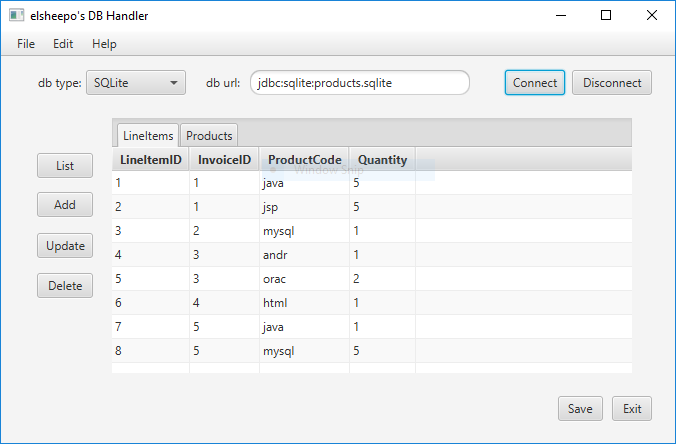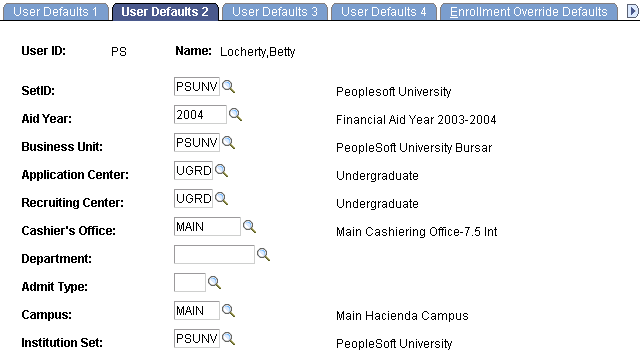

- TABLEVIEW WITH DATA FROM USER DEFAULTS SWIFT HOW TO
- TABLEVIEW WITH DATA FROM USER DEFAULTS SWIFT UPDATE
- TABLEVIEW WITH DATA FROM USER DEFAULTS SWIFT CODE
The controller will then update the view and display an alert.Īs with anything, there are pros and cons to working with MVC.One of its greatest strengths is that MVC is a design pattern that is learnable. Once the timer lapses, the model will notify the controller that an action is required on the view side. Case 2: Say we have a timer that reminds the user of items that have gone undone for a while.We need to update the model, which will be done by the view controller. Case 1: A user swipes a to-do item, deleting it.Here are two examples of how we could implement MVC: If the model changed, it would notify the controller, and the controller would then update the model accordingly. The controller will get the item from the model, then update the view accordingly. If the view wants to present a to-do item, it will ask the controller to ask the model for the item. Controller: this controls the flow between the view and the model.In this case, it is what will present the name of the the to-do item (say, a label), status of the to-do item (say, an accessory), and the swiping gesture to delete. View: this is what the user interacts with on the screen.In our case, to-do items are models of data. MVC is the architecture that the Apple SDK is built on.
TABLEVIEW WITH DATA FROM USER DEFAULTS SWIFT CODE
As we move forward, it would be beneficial to think to yourself: is this piece of code dealing with the UI or the business logic? Understanding MVC These two parts are generally what inspires data separation and hence design patterns such as MVVM and MVC. This includes updating the labels, the table, animating the screen components, and all those pretty things we like to look at. UI logic is the part that deals with the user interface, i.e.

This could be known as “processing” in simpler terms. This includes actions such as updating the data, deleting items from a list, formatting a data type, and that kind of thing. It ensures the models are updated, the data is processed in a way that is human readable, and so on. What is the difference, you ask?īusiness logic is the programming that manages the communication between an end user interface and databases. MVVMīefore we go any further, there are two very integral parts of any iOS app that you should understand: UI logic and business logic. The most important thing you will need is the willingness to learn and follow along with the migration. As you might have guessed, the MVVM branch has the MVVM flavor of the app and the MVC has the MVC flavor. The repo has three branches: master, MVVM, and MVC. The app we will be working with, which is hosted on a GitHub repository.

TABLEVIEW WITH DATA FROM USER DEFAULTS SWIFT HOW TO
The app we will be working on is very simple, so you will only need an understanding of the syntax and how to debug. A general understanding of the Swift language.Xcode 8.3 or later this is the IDE used to build iOS apps.The app also persists the data so that you still maintain the state of the app (number of items, item done or not) after it goes to the background. It can create a to-do activity, delete a to-do activity, and mark an activity as done. The app has all the basic functionalities that will show the patterns. In order to understand the MVC and MVVM design patterns, we will be building a to-do app. We will learn how to use one common iOS pattern, MVVM, in this post. Imagine how much more difficult it will be for someone who did not write the code to navigate it. When you go back to debug, it may be hard to figure out where some things are and why you even did them in the first place. Say you solve a problem without any particular design, and at the moment, it works. Why use design patterns? We use them because design patterns are typically easier to reuse and debug than an unproven design. In this post, we’ll be concentrating on MVVM and MVC. Other common design patterns include MVP (Model-view-presenter) and VIPER ( here is a little write up that describes them). If you’ve built a product, you’ve probably built using MVC. While MVC is a very common and easy-to-implement design pattern, it has been faulted as very inefficient while working with large code bases.

MVVM (Model-View-Viewmodel) and MVC (Model-View-Controller) are both design patterns. Design patterns are reusable solutions to common problems in code.


 0 kommentar(er)
0 kommentar(er)
